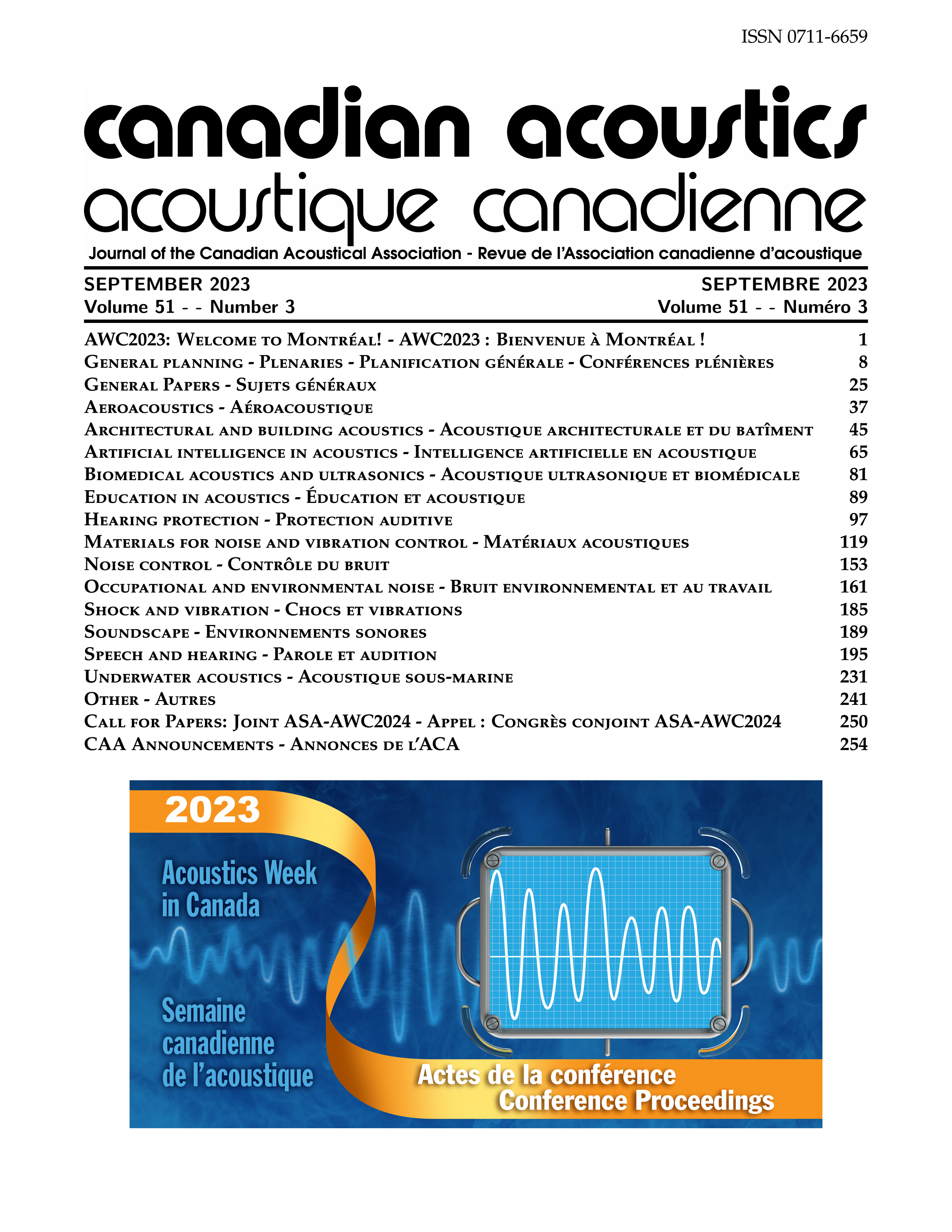Analysis of the Variability of Ship Acoustic Signatures Measured as a Function of Hydrophone Configuration
Abstract
The intensification of maritime traffic implies an increase in underwater anthropogenic noise pollution. It is necessary to describe and quantify the noise generated by maritime traffic, in particular to assess the effects of ship noise on marine animals. Measuring underwater noise radiated by ships is complex, and strongly influenced by measurement conditions. A protocol has been developed to standardize methods for measuring and calculating ship-generated underwater noise (ANSI/ASA S12/64-2009). However, it is often not possible to comply with its many constraints, and each modification is likely to add uncertainty to the final measurement.The Marine Acoustic Research Station (MARS) applied research project (www.projet-mars.ca) is dedicated to understanding and measuring the underwater noise radiated by ships, and proposing appropriate methods for its reduction. An acoustic measurement platform is deployed every year in the Laurentian Channel in the St. Lawrence Estuary, designed to measure the acoustic signatures of ships as closely as possible to the international standard ANSI/ASA S12/64-2009.Since the station's first deployment in June 2021, 101 partner ship passes have been collected, as well as three specially dedicated missions during which the oceanographic research vessel Coriolis II made repeated passes at different distances and speeds. A total of 117 passages on the various measurement antennas have been recorded in 2022. In this way, it will be possible to study the uncertainties and errors in the measurement of the Coriolis II signatures as a function of speed, distance and the number of hydrophones, and to assess the measurement capability of a system as close as possible to the standard by looking at the variability of a ship's signature between antennas of identical configuration.Additional Files
Published
How to Cite
Issue
Section
License
Author Licensing Addendum
This Licensing Addendum ("Addendum") is entered into between the undersigned Author(s) and Canadian Acoustics journal published by the Canadian Acoustical Association (hereinafter referred to as the "Publisher"). The Author(s) and the Publisher agree as follows:
-
Retained Rights: The Author(s) retain(s) the following rights:
- The right to reproduce, distribute, and publicly display the Work on the Author's personal website or the website of the Author's institution.
- The right to use the Work in the Author's teaching activities and presentations.
- The right to include the Work in a compilation for the Author's personal use, not for sale.
-
Grant of License: The Author(s) grant(s) to the Publisher a worldwide exclusive license to publish, reproduce, distribute, and display the Work in Canadian Acoustics and any other formats and media deemed appropriate by the Publisher.
-
Attribution: The Publisher agrees to include proper attribution to the Author(s) in all publications and reproductions of the Work.
-
No Conflict: This Addendum is intended to be in harmony with, and not in conflict with, the terms and conditions of the original agreement entered into between the Author(s) and the Publisher.
-
Copyright Clause: Copyright on articles is held by the Author(s). The corresponding Author has the right to grant on behalf of all Authors and does grant on behalf of all Authors, a worldwide exclusive license to the Publisher and its licensees in perpetuity, in all forms, formats, and media (whether known now or created in the future), including but not limited to the rights to publish, reproduce, distribute, display, store, translate, create adaptations, reprints, include within collections, and create summaries, extracts, and/or abstracts of the Contribution.


